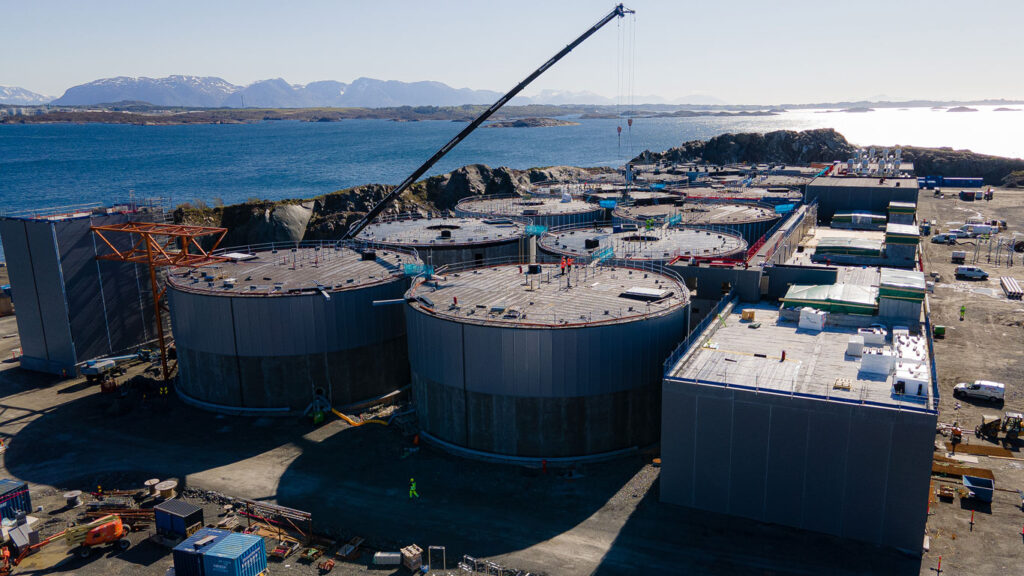
News
Technology
RASTECH23: Inside Salmon Evolution’s RAS-flowthrough hybrid model
May 8, 2023 By RAStech staff
 An aerial view of Salmon Evolution's Indre Harøy facility construction (Photo: Salmon Evolution)
An aerial view of Salmon Evolution's Indre Harøy facility construction (Photo: Salmon Evolution) Todd Deligan, North America general manager of Salmon Evolution, told an enthusiastic crowd at the RASTECH 23 conference how the company created its hybrid flowthrough system, how they handled the challenges of running a business and advice for the future planners.
The question always is what goes in and what goes out of the tank: only three things go into a tank, said Deligan, we have smolt, about 130 grams, Cargill feed and sea water.
The creation of a hybrid flowthrough system came down to location. We are a Norwegian-based company, centred in the “cluster of excellence of aquaculture,” he said. “Our founders are long-time salmon farming aquaculture experts. Their job was about the challenges of sea-based farming and how to address those challenges in a new and unique way. We’ve been growing fish for 50 years. And so the idea of addressing challenges in a new way is somewhat in the DNA of our company, and the industry itself.”
Deligan said because of the company’s unique location for the Indre Harøy facility, a combination of 65 per cent flowthrough, 35 per cent recirculation and 35 per cent new seawater was idea. It provided lower biological risk without the need for biofilters.
Deligan said the company has lucked out with the perfect location at Indre Harøy and emphasizes the company’s commitment to expanding its production capacity target to 100,000 tonnes by 2032. But as the company looks to North America to expand its production and business model, Salmon Evolution must take its time to find the right site.
“It’s about US$600 million to build a facility. If we add a hatchery system and a harvest plant and a processing plant, it’s about US$750 million dollars,” he said. “We need to bring that here and address the climate change issues that face the importation of salmon from around the world. Through our hybrid flowthrough system, we can address the biodiversity in nature issues and we can minimize the diseases and pathogens that come into the system.”
Print this page